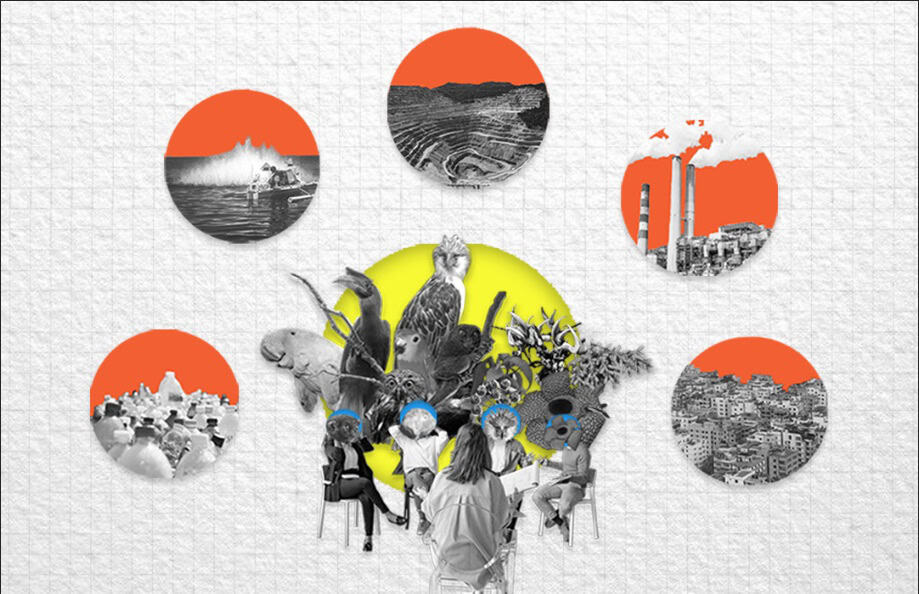A Conversation About Pinoy Scientists in Conservation
Posted by Liv Licardo on July 30, 2025

From colorful birds like the Southern Rufous Hornbill to unique insects like the Milionia coalescens, the Philippines remains one of the most biodiverse places in the world, with thousands of species of vertebrates, invertebrates, and plants.
However, the Philippines is also a biodiversity hotspot at risk. Many endemic species in the country experience high levels of threats for endangerment and extinction due to environmental, social, and economic problems. Overall, it is estimated around 1700 species of flora and fauna have been classified as vulnerable to endangered.
According to Mr. Vinz Pascua, Chief Design Officer of wildlife conservation company Birds in Focus, Inc. (BIF), previous norms have strongly influenced the Philippines’ biodiversity.
“We have to look at our past,” he emphasizes. “Historically, the environs of the Philippines have been exploited by multiple users to the point that they have degraded over time. Massive conversion to agricultural lands played a huge role in declining the lowland forests of Luzon during the previous centuries. That decline in natural resources also extends pressure to decline wildlife as we resort to hunting them down.”
He also underlined how increasing demand for resources and development has led to the spread of unsustainable practices like dynamite fishing that damage crucial habitats. Though convenient, these practices threaten biodiversity—which is why actionable programs that focus on conserving our country’s flora and fauna are urgently needed before it’s too late.
Science diversity for Pinoy scientists
Many Pinoy scientists are taking action towards conserving and preserving vulnerable species in the country.
The Biodiversity Research Laboratory at the University of the Philippines (UP) Diliman is one such laboratory dedicated to conducting long-term ecological research for conservation.
Research associate and Pinoy Scientists contributor Mr. Jay Fidelino shares how the work he does in biodiversity assessment and monitoring contributes to forest restoration. “Research on our biodiversity is crucial because the information that we gather informs and improves the conservation actions that we do,” he explains.
He also discusses his volunteer work with the Biodiversity Conservation Society of the Philippines (BCSP), where he does conservation awareness and communication facilitation work through Communication, Education, and Public Awareness (CEPA) activities such as social media infographics, biodiversity talks with students, and BCSP’s annual Philippine Biodiversity Symposium.
Meanwhile, Pascua focuses on public outreach to raise awareness about the Philippines’ birds and wildlife as well as through Bird Finder Philippines, a bird tour agency that showcases various birding sites of the Philippines to international bird photography groups. Moreover, BIF also publishes and distributes wildlife books [8] [Ma9] that document different species of Filipino flora and fauna.
“For the longest time, the Philippines had zero focus on wildlife books specifically catered to Philippine wildlife that is accessible by Filipinos,” he explains. “We have always relied on wildlife books based on the wildlife found in other countries, which creates this problem of “Ano kaya ang meron dito sa Pilipinas?” and “Bakit walang focus dito sa Pilipinas?”
[What do we have here in the Philippines?” and “Why is there no focus here in the Philippines?”]
“By bridging that problem of information and accessibility, we would provide prospective scientists, researchers, and students with the bridge to a greater understanding of Philippine wildlife,” he adds.
From the skies to the seas
Organizations in the Philippines are also taking steps toward prioritizing biodiversity in the country through different strategies. [JF10] [k11] One such organization is the Philippine Eagle Foundation (PEF), which rescues, rehabilitates, and releases captured and injured Philippine eagles. They also manage regular nest searches, monitor across the species’ distribution, and conduct captive breeding at the Philippine Eagle Center. Notably, PEF works on restoring ecological systems to create habitats by integrating local knowledge from various communities.
“PEF…recognizes the crucial role of local and indigenous communities in protecting the oldest breeding sites of Philippine Eagles, having lived alongside these eagles the longest,” comments Fidelino. “[They] recruit forest guards that help them protect Philippine Eagles and their habitats from these communities. In addition, [they provide] these communities [with] opportunities to participate in conservation while also meeting their economic and social needs, ensuring mutual benefits and long-term success.”
Other organizations that aim to protect and conserve wildlife include Haribon Foundation, which aims to protect Philippine ecosystems; Save Philippine Seas, which works towards conserving coastal and marine resources; and Marine Wildlife Watch of the Philippines, which supports marine wildlife and environment.
Ultimately, there is still much to do when it comes to conservation, from learning more about our own flora and fauna to understanding their ecology and interactions.
Fidelino expounds on how studying our local species allows us to learn more about their conditions and what we can do to help.
“Given the Philippines’ special position as both a megadiverse country and a biodiversity hotspot, there is still a lot that we don’t know about our species, their habitats, the threats that they face, and the ways that we can help combat these threats,” Fidelino explains. “More and more species continue to be discovered and described by science each year. This information in turn allows us to craft more effective conservation and management strategies for species and their habitats.”
Pascua further emphasizes the need for everyday citizens to get involved with wildlife conservation in the ways that they can. He highlights the importance of valuing Filipino biodiversity and ecotourism over exploring other countries.
“We need to embrace what we have in the Philippines,” Pascua explains. “If we don’t, then we lose every meaning of being a Filipino.”
